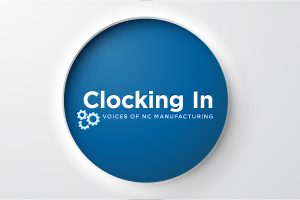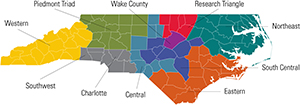How can you manage employees from multiple generations? This question has become more important in recent years. With the Boomer Generation retiring at record rates, Gen X is taking over the managerial roles and Generation Z and the Millennial Generation are taking over the workforce. How can you effectively manage these generations of workers?
As of right now, Millennials are the largest generation in the workforce. The number of millennials in the workforce is 56 million. This generation represents 35% of the total US labor force. In 2020, they began to outnumber Baby Boomers and GenXers combined.
Due to generational differences and outlooks, there are noticeable and often glaring variances between older and younger employees. We don’t believe this is a reason to prevent a workplace from forming cohesive teams, maintaining a healthy organizational culture and excelling.
Digital Vs. Tradition Communication
Millennials and Generation Z have grown up in a digital world. They are comfortable with technology and expect companies to provide them with easy access to information and services. They also expect to be able to communicate effectively through text messaging, social media, email and other forms of online interaction. When it comes to recruitment, Millennials prefer to apply directly to jobs via websites, while older generations tend to prefer to go through recruiters. While the younger generations prefer to communicate digitally, the older generation prefers to communicate in a more traditional way. Baby Boomers prefer a face-to-face method of communication, while Generation Xers prefer to speak via phone, email or text.
To communicate effectively with employees across generations, you’ll want to use varying communication including verbal, written, and electronic. You should consider using different channels for each type of employee. For example, if your company has a lot of baby boomers, you may need to make sure that all your communication happens in person or by telephone. If your company has many millennials, you will likely find that most of your communication style should happen electronically.
Workplace Flexibility
For Generation Z and Millenials, workplace flexibility is the name of the game. For many younger workers, the idea of working at a company that doesn’t offer flexible hours and remote work opportunities is unattractive. According to Gallup’s research, 80% of Americans would like to work for an employer that offered flexible scheduling options. Millennials are even more likely to want flexible schedules: 92% of them say they’d like to work for such an employer.
Flexibility at work is an important aspect of healthy work culture. It allows employees to schedule their days around their lives instead of the other way around. Flexibility gives them the freedom to choose when and where they work, increasing job satisfaction. When employees feel like they have choices about their workday, they’re more likely to stay engaged. Providing flexible work also gives your organization a competitive advantage.
Workplace flexibility can come in many forms. The ability to provide remote work, part-time work or working outside of the traditional “9 to 5” are all ways organizations can provide flexible work to their employees.
Collaborative vs. Individualistic
Another thing you’ll encounter in a multigenerational workforce is different work styles. Baby boomers and Generation Xers are known for being independent. Many Baby Boomers and Gen Xers were raised with an emphasis on individual achievement. While the opposite may be true for younger workers. Millennials and Generation Z grew up in an era of constant praise and encouragement and are more likely to be collaborative than previous generations.
Younger people also look for more guidance, feedback, acknowledgment, and support from their leaders and peers than older people. This can cause tension between generations as older, more independent individuals scoff at what they perceive as the outcome of a pampered, high-maintenance younger generation. This attitude may come off as disrespect to younger generations and cause a rift in the workplace. To combat any misunderstanding it’s vital for leaders to emphasize both individual and collaborative work.
Outside of generational stereotypes, there are people within generations that have different methods of communication, workplace preferences and work styles from their peers. It’s important to offer as many options as your organization can to attract the best talent in any generation.
If you want to learn more about operating in a multigenerational workforce, join us on June 22 at 9 a.m. for the “Managing the Multigenerational Workplace” webinar. The webinar is designed to help you adapt to the modern workplace and create awareness and data-forward understanding of the benefits of a multigenerational team and workplaces through resource sharing, interactive activities, and open dialogue; topics include historical context, communication, and work styles.



